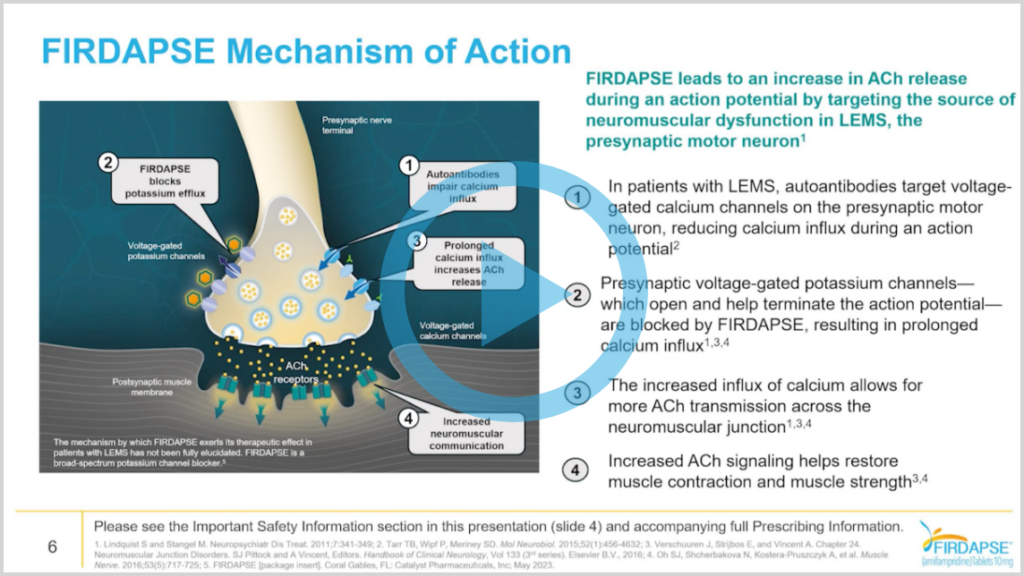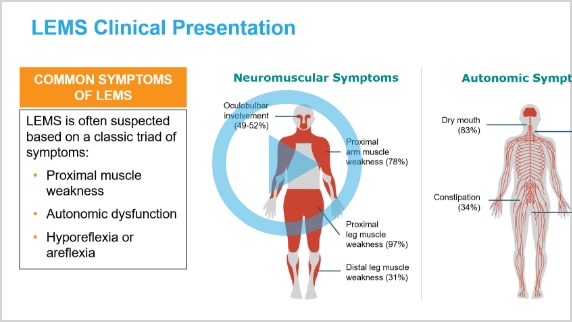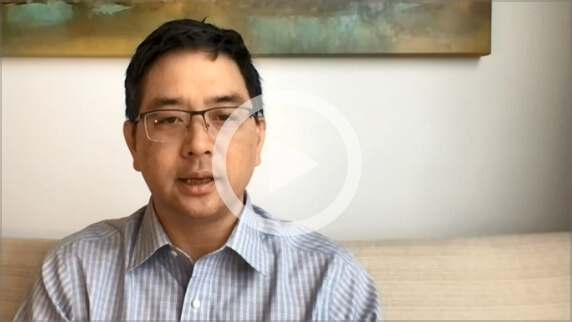LEMS EDUCATIONAL VIDEO LIBRARY
Lambert-Eaton Myasthenic Syndrome (LEMS): An Often-Misdiagnosed Condition with Symptoms of Weakness and Fatigue: Diagnostic and Therapeutic Strategies in an Ultra Rare Disease
This educational video series describes the clinical presentation of LEMS, the challenges of diagnosis, and the role that FIRDAPSE® can play in treatment. In addition, case studies illustrating a patient with small cell lung cancer who is also diagnosed with LEMS, as well as the diagnosis and treatment of a patient with weakness due to LEMS, will be discussed.
CHAPTER 1—DISEASE OVERVIEW AND PATHOPHYSIOLOGY OF LEMS
This video describes the mechanism of disease, pathophysiology, and classification of LEMS as well as the expected progression of LEMS in patients diagnosed in the presence or absence of a cancer diagnosis.
Perry B. Shieh, MD, PhD
Department of Neurology
David Geffen School of Medicine at UCLA
Edgardo S. Santos, MD, FACP
Thoracic Oncology
Genesis Care, USA
CHAPTER 2—CLINICAL SUSPICIONS AND DIFFERENTIAL DIAGNOSIS OF LEMS
This video describes the clinical presentation and diagnostic approaches for LEMS. Common misdiagnoses and differentiating LEMS from other conditions, as well as assessment of cancer in patients diagnosed with LEMS, are also discussed.
Perry B. Shieh, MD, PhD
Department of Neurology
David Geffen School of Medicine at UCLA
Edgardo S. Santos, MD, FACP
Thoracic Oncology
Genesis Care, USA
CHAPTER 3—CASE STUDY: A PATIENT WITH WEAKNESS DUE TO LEMS
This video discusses a case study of a male patient who presents with lower extremity weakness and includes the neurological work-up used for his diagnosis of LEMS and his treatment journey.
Perry B. Shieh, MD, PhD
Department of Neurology
David Geffen School of Medicine at UCLA

CHAPTER 4—FIRDAPSE MOA, Efficacy, Safety, and Titration
This video provides a clinical overview of FIRDAPSE, including its MOA; the efficacy and safety results from two Phase 3 clinical trials; and dosing guidelines.
Perry B. Shieh, MD, PhD
Department of Neurology
David Geffen School of Medicine at UCLA
CHAPTER 5—DISEASE OVERVIEW AND PATHOPHYSIOLOGY OF LEMS
This video includes a case study of a female patient diagnosed with small cell lung cancer who complains of lower limb muscle weakness and difficulty rising from a seated position—and her journey to a LEMS diagnosis.
Edgardo S. Santos, MD, FACP
Thoracic Oncology
Genesis Care, USA
This program and its materials have been sponsored by Catalyst Pharmaceuticals. The speakers have been compensated by Catalyst Pharmaceuticals to provide this presentation. This presentation is consistent with all applicable US Food and Drug Administration (FDA) requirements and the approved product labeling for FIRDAPSE® (amifampridine). This program is not intended for continuing education credit for healthcare professionals. Any expenditures in relation to this event may be reported as required by state and federal spend-reporting requirements.



